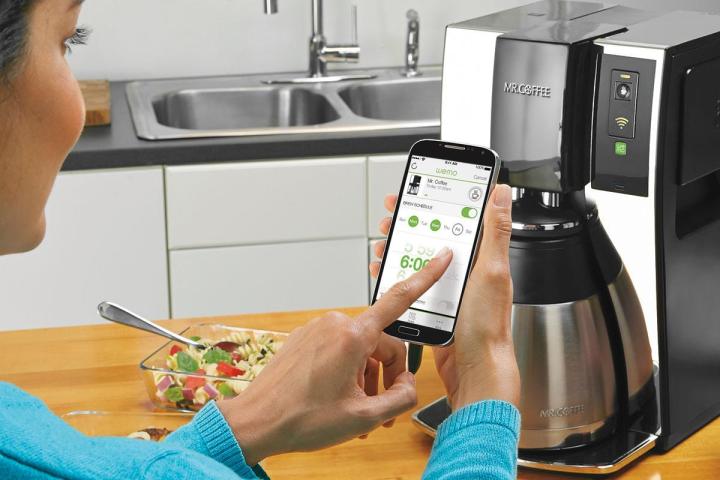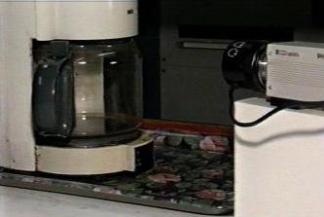
Mr. Coffee’s Smart Coffeemaker, due out next month, rises to the challenge with an app to let you schedule brew times, remind you to clean it, and most importantly, tell you how long the coffee has been siting.
Revolutionary! Except more than two decades ago, a group of ambitious Cambridge University students solved the same problem with a webcam, and became an Internet sensation.
“Caffeine consumption and computer science seem to be closely tied together.”
What today may seem like a gag from The Big Bang Theory was serious business back in the early ‘90s, when the Cambridge University students aimed a camera at a shared coffee machine in the hall. Sleep-deprived researchers needed to know if there was any coffee left — and to get it while it was still hot. The pot went public on the World Wide Web in 1993, becoming what is credited as the first public Web cam.
“We were poor students who had to pay for every cup, and the coffee was pretty bad when it was fresh,” said Stafford-Fraser, “and appalling if you got the dregs at the end of the pot!”
In an era when everybody and their dog (and cat) has a $50 Web cam pointed at them, the idea of watching a coffee pot may seem about as exciting as watching paint dry. But by 1996 more than 1 million people on the Web had checked out the Trojan Room pot. It was one of the longest running Web cams when it was finally shut off in August of 2001.
Since those embryonic days of the Web, Stafford-Fraser has founded several companies, including a consultancy, Telemarq, and he is still a research associate at the Cambridge University Computer Lab. So does Stafford-Fraser think there’s any merit today to connecting a coffee machine to the Web?

“Network connectivity can improve the use of ordinary machines which are shared amongst several people,” he noted, citing another early effort to make ordinary appliances smarter. When he was working at the Olivetti Research Lab after college, he and several friends there rewired the communal drink vending machine to recognize employees and their preferences (hot chocolate, coffee with milk, etc.). As people approached the machine, the wireless employee badges they wore triggered the machine to dispense their drinks of choice.
It was one solution to the machine’s terrible user interface, illustrating one advantage that a Web-connected device can offer. The Mr. Coffee machine, for example, eschews a built-in abstruse LCD display in favor performing all the programming in an easy-to-follow app.
There was one catch with the Olivetti lab machine, recalled Stafford-Fraser and his friend Andy Ward: The system had a random mode that might pick a drink for you. The gentleman’s agreement at the research facility was that you drank what you were served, even if it turned out to be the machine’s “disgusting” Mokaccino.
The story points out that there’s one thing that a fast Internet connection or even a fancy app can’t promise today: A better cup of coffee.
Editors' Recommendations
- Best coffee maker deals: Cuisinart, Ninja, Mr. Coffee starting at $20
- I replaced my fancy coffee machine with a smart tea kettle, and I love it
- Is a smart coffee maker worth it?
- What is a smart coffee maker?
- Instant Pot tackles coffee with Instant Pod 2-in-1 machine


